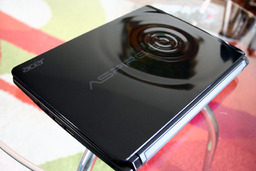

>>1790
>last based version
based
>>1789
Define a computer, I think if we are dealing with handhelds
then we can say that even a modern phone would do.
But why, or why not?
Are we dealing with:
>anonymity - (((botnet))) (OS/app-level spywares)
>hardware - (((bugged))) (backdoored or backdoorable thru DMA attacks)
>beaconless - (((beaconful))) (bt/wlan/GNSS/bands)
Above shows the polarities, to the left is preferred though it is a matter of sacrificing performance as the more modern the more bot/bugs/beacons.
It doesn't matter if it is
(((modern hardware))) or not,
even most recent desktops have bugged bios, and especially the CPU.
Anonymity is another topic, but goes hand in hand with how bugged the system is.
Let's say you have a Nokia 8110 4G running a free-er Gerda version but there might still be blobs for beacons like GNSS/GSM/4G.
The minimal requirement for Anonymity is WiFi and yeah, wifi is cool and at least very hackable unlike every beacon.
>what use is anonymity if you don't even exist in a network
There's already tons of Alpine based PostmarketOS devices out there for this kind without the need for blobs.
A bananaphone (the nokia one) can manually change IMEI which makes sense if you want to
anonymize your SIM usage and still have a sense of anonymity while enjoying the benefits of SMS
(as these days, most normshit accounts require SMS verification, Steam games, email, social media).
>I perceive those more as a vector of information than for normshit usage. limiting your own accesses (to say exclusively irc, self hosting, and browsing only one imageboard for fucking life) only limits your opportunities or abilities
Now moving back to the polarities, most of the reason behind having a handheld computer is:
>it's cool and useful
but sometimes it's those cyberpunk fashion/hobby with no real usage than cosplaying or larp convention
>you can do many things
though android already does those lots although bugged/beaconed - there are copperhead/graphene and other distros for that
Then with this in mind, I would say even a 10" AOD270 would do in usability/portability's case.
You'll have all that battery life and computing power, blobless wifi, possibly beaconed processor though.
We can go smaller than 10" but this reduces the productivity of a full-sized qwerty.
And as we go smaller the price also grows exponentially and loses the ability for "replacement parts".
Other problems to deal with:
>does it have blobless beacons (RIL)
>does it use free GPU (etnaviv/lima)
>is it mainline / have available packages?
>are parts replaceable and available?